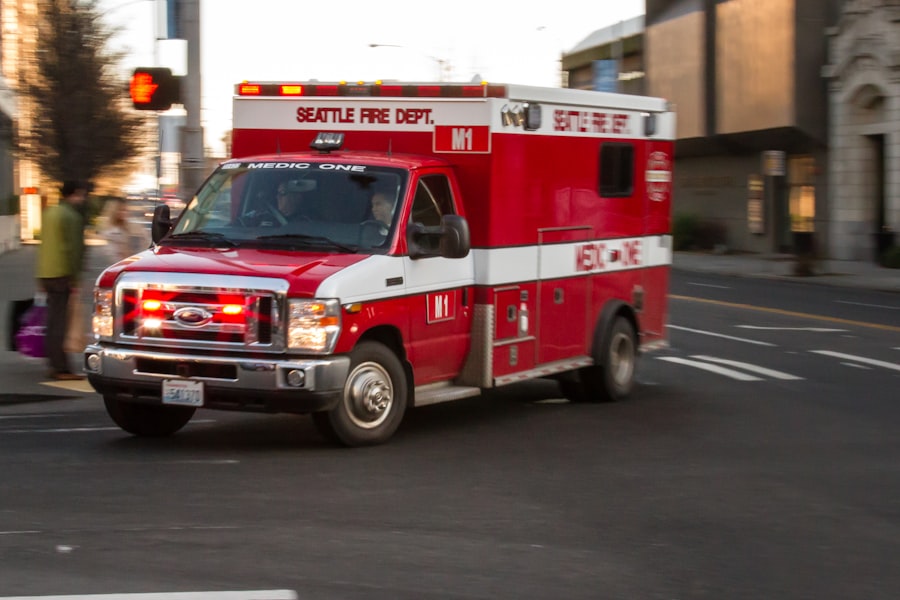
Emergency Medical Technicians (EMTs) and paramedics serve as the frontline responders in the healthcare system, playing a critical role in providing immediate medical care to individuals experiencing acute health crises. Their responsibilities extend beyond merely transporting patients to medical facilities; they are often the first point of contact in emergency situations, which can include anything from cardiac arrests to traumatic injuries. EMTs and paramedics are trained to assess patients quickly, administer life-saving interventions, and stabilize individuals until they can be handed over to hospital staff.
This initial care is crucial, as it can significantly influence patient outcomes, particularly in time-sensitive situations. In addition to their clinical skills, EMTs and paramedics must possess strong communication abilities. They frequently interact with patients who may be in distress or unable to articulate their needs due to their medical conditions.
Effective communication is essential not only for gathering vital information but also for reassuring patients and their families during high-stress situations. Furthermore, these professionals often collaborate with other emergency responders, such as police officers and firefighters, to ensure a coordinated response to emergencies. This multidisciplinary approach enhances the overall effectiveness of emergency services and underscores the importance of EMTs and paramedics within the broader healthcare framework.
Key Takeaways
- EMTs and paramedics play a crucial role in the healthcare system by providing emergency medical care and transportation to those in need.
- Educational requirements for EMTs and paramedics include completing a state-approved training program and obtaining certification.
- The job outlook for EMTs and paramedics is expected to grow, with a potential for competitive salaries and benefits.
- Working as an EMT or paramedic can be challenging, but it is also rewarding to make a difference in people’s lives during emergencies.
- Specializations and career advancement opportunities in the field include becoming a paramedic supervisor, flight paramedic, or pursuing further education in healthcare.
Educational Requirements and Training for EMTs and Paramedics
The educational pathway for becoming an EMT or paramedic typically begins with obtaining a high school diploma or equivalent. Following this foundational step, aspiring EMTs must complete a state-approved training program, which can vary in length but generally lasts between 120 to 150 hours for EMTs. These programs cover essential topics such as anatomy, physiology, medical terminology, and emergency response protocols.
Upon completion of the training, candidates must pass a certification exam administered by the National Registry of Emergency Medical Technicians (NREMT) or a similar state body. For those seeking to advance their careers as paramedics, additional education is required. Paramedic training programs are more extensive, often requiring 1,200 to 1,800 hours of coursework and clinical practice.
These programs delve deeper into advanced medical procedures, pharmacology, and critical care techniques. Many paramedic programs also offer an associate degree option, which can enhance job prospects and provide a more comprehensive understanding of healthcare systems. After completing the program, candidates must pass both a written and practical exam to obtain their paramedic certification.
Job Outlook and Salary Potential for EMTs and Paramedics

The job outlook for EMTs and paramedics is promising, with the U.S. Bureau of Labor Statistics projecting a growth rate of 11% from 2020 to 2030, which is faster than the average for all occupations.
As communities recognize the importance of rapid response capabilities in healthcare, the need for trained EMTs and paramedics continues to expand.
According to the Bureau of Labor Statistics, as of May 2020, the median annual wage for EMTs was approximately $36,850, while paramedics earned a median annual wage of around $48,000.
However, salaries can vary significantly based on factors such as geographic location, level of experience, and type of employer. For instance, EMTs and paramedics working in urban areas or for specialized services may command higher salaries than those in rural settings or volunteer positions.
Challenges and Rewards of Working as an EMT or Paramedic
| Challenges | Rewards |
|---|---|
| High stress levels | Ability to save lives |
| Long and irregular hours | Gratitude from patients and families |
| Exposure to traumatic situations | Opportunity to make a difference in the community |
| Physical demands of the job | Strong sense of teamwork and camaraderie |
Working as an EMT or paramedic presents a unique set of challenges that can test both physical endurance and emotional resilience. The nature of emergency medical services often involves long hours, irregular shifts, and exposure to traumatic situations that can lead to burnout or compassion fatigue. Responding to life-threatening emergencies requires not only technical skills but also the ability to remain calm under pressure.
The unpredictability of each call can be daunting; EMTs and paramedics must be prepared for anything from minor injuries to catastrophic events. Despite these challenges, many professionals in this field find immense rewards in their work. The opportunity to make a tangible difference in people’s lives during their most vulnerable moments is a powerful motivator for many EMTs and paramedics.
The sense of camaraderie among colleagues also fosters a supportive work environment where individuals can share experiences and cope with the emotional toll of their jobs together. Additionally, the skills acquired through this profession are transferable; many EMTs and paramedics go on to pursue advanced roles in healthcare or related fields, further enhancing their career satisfaction.
Specializations and Career Advancement Opportunities in the Field
As EMTs and paramedics gain experience in their roles, they may choose to pursue specializations that allow them to focus on specific areas of emergency medical care. Some common specializations include critical care transport, tactical EMS (working with law enforcement), and flight paramedicine (providing care in air ambulances). Each specialization requires additional training and certification but can lead to increased responsibilities and higher earning potential.
For example, critical care paramedics often work with patients who require advanced monitoring and interventions during transport between facilities. Career advancement opportunities are abundant within the field of emergency medical services. Many EMTs choose to further their education by pursuing degrees in nursing or other healthcare professions, which can open doors to roles such as registered nurse or physician assistant.
Additionally, some may aspire to leadership positions within their organizations, such as becoming a supervisor or training officer. The skills developed as an EMT or paramedic—such as decision-making under pressure, teamwork, and effective communication—are highly valued in various healthcare settings, making it possible for these professionals to transition into diverse roles within the industry.
How to Pursue a Career as an EMT or Paramedic in the USA

To embark on a career as an EMT or paramedic in the United States, individuals should begin by researching local training programs that meet state requirements. Many community colleges and technical schools offer accredited courses that provide both classroom instruction and hands-on clinical experience. It is essential to ensure that any program chosen is recognized by the NREMT or relevant state certification body.
Prospective students should also consider factors such as program length, cost, and available financial aid options. Once enrolled in a training program, students should focus on mastering both theoretical knowledge and practical skills through simulations and clinical rotations. After completing their education, candidates must pass the NREMT certification exam for EMTs or paramedics before applying for state licensure.
Networking with professionals already working in the field can also be beneficial; attending local EMS events or joining professional organizations can provide valuable insights into job opportunities and industry trends. Ultimately, dedication to ongoing education and professional development will enhance career prospects in this dynamic field.
If you’re exploring various healthcare and emergency service careers, you might also be interested in learning about other related professions. For instance, the role of Dental Hygienists is crucial in the medical field, focusing on oral health, which is an essential part of overall health. This article provides detailed insights into the responsibilities, educational requirements, and career outlook for dental hygienists in the USA, offering a comprehensive view for those considering a career in the healthcare sector.
FAQs
What is the difference between an EMT and a paramedic?
An EMT (Emergency Medical Technician) is trained to provide basic emergency medical care and transportation to patients. A paramedic has more advanced training and can provide a higher level of care, including administering medications and performing advanced medical procedures.
What are the educational requirements to become an EMT or paramedic in the USA?
EMTs typically complete a certificate program that can be as short as a few weeks, while paramedics usually complete a two-year associate’s degree program. Both EMTs and paramedics must also pass a national certification exam.
What is the job outlook for EMTs and paramedics in the USA?
According to the U.S. Bureau of Labor Statistics, employment of EMTs and paramedics is projected to grow 6 percent from 2019 to 2029, faster than the average for all occupations.
What are the typical work environments for EMTs and paramedics?
EMTs and paramedics can work for ambulance services, fire departments, hospitals, and other healthcare facilities. They may also work in more specialized settings, such as on helicopters or in remote areas.
What are the key skills and qualities needed to succeed as an EMT or paramedic?
EMTs and paramedics need to have strong problem-solving skills, the ability to work well under pressure, and excellent communication skills. They also need to be physically fit and able to lift and carry patients.



